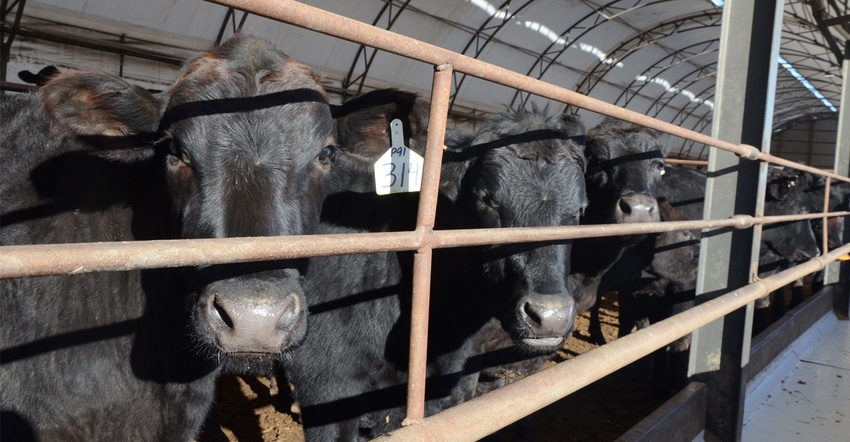
As the population in the U.S. and throughout the world increases, and the amount of land dedicated for perennial forage continues to decline, beef producers face a challenge: how to use available land resources to efficiently raise cattle.
Jim MacDonald, associate professor of animal science and ruminant nutrition at the University of Nebraska-Lincoln, notes answering this question is the main goal of research funded by a $1 million Seeding Solutions grant from Foundation for Food and Agriculture Research. The FFAR grant is matched by UNL's Institute of Agriculture and National Resources and the Platte River-High Plains Aquifer for a $2.4 million investment.
"In projected population growth, the southeast U.S. is going to be heavily populated in the next 30 years, which is going to change agricultural dynamics. With more demand for food in and out of the U.S., cropping systems are going to be intensified," says MacDonald. "From 2005 to 2012, corn prices spiked, and we saw tremendous conversion of grassland going to cropland. I think it's going to be much more difficult for that land mass to go back into perennial grass systems. From a beef perspective, how do we fit into these changing landscapes?"
With the help of these funds, the research team, which includes members of a new Nebraska Beef Systems Research Initiative led by the UNL Center for Grassland Studies, plans to investigate ways to boost land-use efficiency through the integration of livestock and crop production.
The other challenge driving this research is a buzzword used more and more these days — sustainability. MacDonald notes the three primary sustainability components in beef production: cattle, land and people. So, the project will also evaluate yield, soil health and greenhouse gas emissions, as well as economic feasibility and adoption barriers of these new practices.
Integrating crops and cattle
The primary system being evaluated involves raising cows and calves in confinement, either under roof or in a drylot setting, for part of the year — usually during summer, when many graziers in Nebraska run into a "summer slump" of limited grazing resources. After calving, lactating cows will graze cover crops, and after weaning in spring, dry cows will graze cornstalks. Including a cereal crop in the rotation like wheat or oats provides more flexibility for earlier forage establishment.
The team will compare this system with the traditional spring-calving, summer-grazing system to evaluate certain forage production opportunities and risks.
The Beef Systems Research Initiative is also working with the U.S. Meat Animal Research Center near Clay Center to evaluate the integration of grazing perennial grasses and forage crops, as well as USDA's Agricultural Research Service in Lincoln to integrate perennial crops like switchgrass into an annual crop rotation.
However, as the Beef State, Nebraska boasts plenty of seasoned graziers with expertise in maintaining valuable resources like the rangelands of the Sandhills. So producers will play a key role in this research, participating in surveys and focus groups to gather input about how they make decisions and share their wisdom on grazing management, as well as barriers in adopting certain production practices.
Opportunities for young producers
MacDonald adds integrated systems are one way for young and beginning farmers to get started in agriculture, and part of the research involves understanding the economic benefits of these systems for both new and established producers.
"Maybe it's a son or daughter who's come back, but maybe it's somebody who didn't grow up in agriculture. The right to enter agriculture is a bit of a birthright. It's much more difficult if you're not born into that situation," he says. "I'm amazed and inspired by the number of students who really want to work in production agriculture. We just have to figure out how to give opportunities to young people who have the same drive as the people currently in production agriculture."
Meanwhile, the project will be able to monitor emissions of greenhouse gases like methane, carbon dioxide and nitrous oxide leaving these production systems, and hopefully, help farmers and ranchers choose which practices will help reduce those emissions.
"That's an emotionally charged area, and we understand that. But if anyone should be measuring that, we think it should be us, because we understand production systems," MacDonald says. "If the public is applying pressure, which they are, we need to look at the efficiency of production and use those gases as a metric of efficiency. Our hypothesis is the model we're evaluating will be more efficient at producing food per acre unit of land and unit of carbon dioxide, methane and nitrous oxide."
Additional members of the team include Tala Awanda, Nebraska's Agricultural Research Division; Simanti Banerjee and Jay Parsons, Department of Agricultural Economics; Humberto Blanco and Daren Redfearn, Department of Agronomy and Horticulture; Mary Drewnoski and Galen Erickson the Department of Animal Science; Jane Okalebo and Andy Suyker from the School of Natural Resources; and George Burba from Li-Cor Biosciences.
About the Author(s)
You May Also Like






